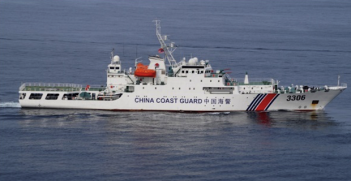The Judgments Project

For Australia, legal certainty in the enforcement of civil and commercial judgments across borders is a top priority. An improved framework is even more important given recent trade agreements that will deepen trade ties between Australia and its trading partners.
In a world where transactions can span the borders of multiple countries facilitated by ever-improving technologies, the need for effective cross-border dispute resolution systems continues to rise. The increasing movement of personnel and growth of cross-border consumer transactions, as well as more frequent and significant commercial transactions, has made the question of recognition and enforcement of legal judgments more pressing. However, with the lack of an international convention covering this matter, countries apply their own rules on recognition and enforcement. This fragmented system increases the costs and risks associated with international litigation.
This is in sharp contrast to international arbitration awards, which benefit from the framework provided by a widely ratified recognition and enforcement convention, the Convention on the Recognition and Enforcement of Foreign Arbitral Awards (New York, 1958) (the New York Convention). The New York Convention has been a major factor in the impressive growth experienced by international arbitration in comparison to international litigation. However, international arbitration cannot simply stand in for international litigation. Litigation is an indispensable part of the international justice framework. It is imperative for it to grow hand in hand with arbitration. The importance of developing an effective international framework for recognition and enforcement of foreign judgments in order to address concerns of cost, fairness and access to justice cannot be downplayed.
Given that Australia’s trade in goods and services amounted to nearly AU$670 billion in 2015, improved legal certainty and accessibility in the enforcement of civil and commercial judgments is a top priority. An improved framework becomes increasingly important with the signing of the Trans-Pacific Partnership in early 2016, with forecasts of deepening trade ties between Australia and its Pacific Rim trading partners.
Australia’s current situation
Understanding Australia’s involvement in and perspectives on the development of an international instrument for the recognition and enforcement of foreign judgments requires an understanding of the present framework. Comprised of multiple pieces of legislation and resorting at times to archaic common law principles, the framework has been criticised for being fragmented and perpetuating “legal favouritism”. Against this background there is a prevailing need to rethink and re-craft our relationships with our region and our major trading partners.
This has been recognised by Australia for several years. In November 2011, a seminar on “Tackling the Legal Challenges in Cross-Border Transactions” was held to examine the legal issues that arise in the context of cross-border transactions. Both Australia and New Zealand continue to give explicit support and top priority to the work of the Hague Conference on Private International Law, the leading inter-governmental organisation in the unification of private international law rules in the area of international litigation. As a recent indication of this support, in early 2016 Australia tabled the Hague Conference’s Convention of 30 June 2005 on Choice of Court Agreements (the “Choice of Court Convention”) for consideration by the federal parliament.
Most importantly, Australia has been a strong supporter and active participant in the so-called Judgments Project of the Hague Conference, a project for drafting a global convention on the recognition and enforcement of foreign judgments. In 2016, this project has reached a new milestone with the completion of the first meeting of the special commission set up to draft of this new convention.
So, why should Australians care about the Judgments Project?
The Judgments Project and Australia’s involvement
This is not the first time that a project of this nature has been proposed. Rather, work on instruments concerning the recognition and enforcement of foreign judgments hark back to the 1950s, when the Hague Conference was first established as an intergovernmental organisation. The most recent phase of the Judgments Project commenced in 2011 and was marked by the setting up of an expert group. Despite trials and tribulations, it is hardly disputed that a successful convention in this field would be valuable in facilitating cross-border trade and other civil and commercial transactions. As the explanatory note for this project proclaims, the main objectives are meritorious: enhancing practical access to justice; facilitating trade and investment; and contributing to economic growth.
It is no wonder that Australia has been an avid supporter. During the first meeting, held in June 2016, Australia’s delegation was one of the most active in tabling proposals and engaging in discussion on significant issues within the draft convention. Australia’s experts are also set to play a key role in ongoing negotiation and discussion, through participation in working groups and the drafting committee. With completion slated for 2018, it is an exciting and fitting time for Australia to add its voice to the negotiation table.
The path ahead
Notwithstanding that the first meeting of the special commission wrapped up on a largely positive note, there is still considerable work ahead. As observed from previous attempts at creating such a convention, there is considerable difficulty in drafting a convention that successfully navigates and balances both the common law and civil law legal traditions. This is an unavoidable challenge for the project. The discussions at the first meeting reflected three broad sets of issues within the draft text to which Australia should be alive as negotiations move forward.
First, the treatment of intellectual property within the future convention remains hotly debated and subject to work before the next meeting of the special commission. Australia will play an active role in working on this issue, with anticipated involvement in the intersessional work.
Second, the relationship between and complementarity of the Choice of Court Convention and the future convention will be of particular interest to Australia, given Australia’s interest in ratifying the Choice of Court Convention.
Third, ironing out particular issues that arise from the interplay of different legal systems will be necessary to ensure that the future convention will serve Australia’s interests. In particular, Australia has voiced its opinion on matters concerning limitations on the period for seeking review of a judgment, submission as a grounds of indirect jurisdiction and the formulation of the lis pendens (notice of claim) rule.
Australia should also assess how the Judgments Project may be impacted by recent events. Following Brexit, the world stands at an interesting juncture in its progress toward increased global cooperation and unification. The progress of the Judgments Project in 2017 could be an interesting barometer of the appetite for its negotiating states to continue their march toward greater integration. Needless to say, watch this space.
Reyna Ge graduated from the University of New South Wales in 2015 with a combined commerce and law degree. She is the 2016 Peter Nygh Intern to the Hague Conference on Private International Law (co-sponsored by the Australian Institute for International Affairs). This article is published under a Creative Commons Licence and may be republished with attribution.





